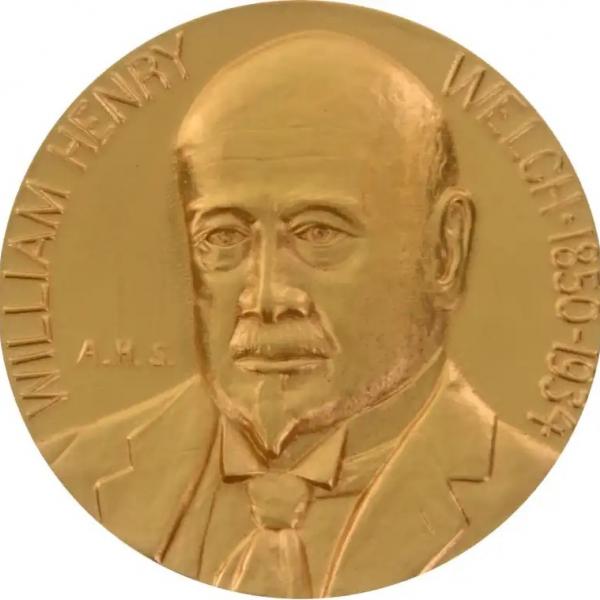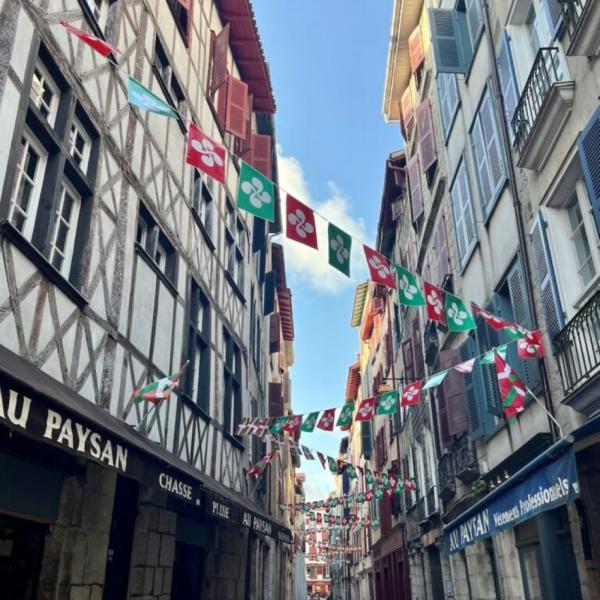Kevin Butterfield (PhD, '10) on shaping the direction of George Washington’s presidential library as its executive director
Of the nearly 1,200 volumes in George Washington’s personal library when he died, 101 books are currently housed in the Fred W. Smith National Library for the Study of George Washington at Mount Vernon. Kevin Butterfield (PhD, '10) is shaping the direction of Washington’s presidential library as its executive director. Part of the task ahead of him, he explains, is providing a space for researchers to explore the difference between Washington the symbol of national origins and Washington the man.
"People tend to see Washington as a man of action, not a man of thought and learning," Butterfield says. "Though his formal education was finished by the time he was 13 or 14 years old, Washington continued to read and study the rest of his life." Butterfield and his team are curating an archive that puts Washington’s books and correspondence in conversation with the material artifacts and historical documents of Mount Vernon and 18th-century America more broadly.
Washington the reader
Washington’s dedication to the pursuit of knowledge is evident in the kinds of books that he owned. His library was full of volumes on politics and the law. "He’s not a lawyer," Butterfield notes, "but as someone who studies legal history I was surprised and shocked to find out that Washington was very well read in the law. And that of course makes sense—he lived in a world shaped by the law, and even if he wasn’t a lawyer he helped make law. He was the president of the Constitutional Convention, after all! And he had an active role to play in the creation of the American judicial system."
Other prominent sections in Washington’s personal library include agricultural works and novels. Though Jefferson is the founding father most associated with experimental farming, Butterfield says that Washington "corresponded with some of the greatest agricultural innovators of the day both in the United States and abroad."
He also had a surprisingly large appetite for fiction. One of the more curious volumes in Mount Vernon’s collections is a copy of Don Quixote. "There was a conversation," Butterfield explains, "at one point where Washington had to admit that he had not read Don Quixote, and so he went out and bought an English translation on the last day of the Constitutional Convention."
In addition to published volumes, Washington’s presidential library also includes manuscripts, letters, and other handwritten documents of life at Mount Vernon. While Martha Washington seems to have destroyed much of George’s correspondence after his death, the library holds one of two surviving letters.
It is a letter that George wrote to Martha on the day that he was about to leave Philadelphia to take command of the Continental Army in Boston. 'It’s this great, short letter that he writes for his wife that is genuinely full of emotion," Butterfield says. "You could tell that he wants to convey to her how much he feels for her and how close he feels to her in this letter, and it just happened to survive. My hunch is that that even if she did destroy the correspondence maybe she couldn't bring herself to burn that one."
A legal historian at the helm
Butterfield is a Missouri native who came to WashU to study early American history under David Konig. "I was interested in why it was that people in that period started joining together into groups—associations, corporations, reading clubs, debating societies," Butterfield says. He would develop those ideas in his first book, The Making of Tocqueville’s America (2015), a legal history of membership in early America. From WashU Butterfield moved to the University of Oklahoma, where he was an assistant professor in the then newly formed Institute for the American Constitutional Heritage. After eight years in Norman, Butterfield was approached to head up the new research library at Mount Vernon.
"It's really an honor to be here every day and to know that I’m just steps away from the mansion itself, from Mount Vernon, which was the first White House of the United States."
"It's really an honor to be here every day and to know that I’m just steps away from the mansion itself, from Mount Vernon, which was the first White House of the United States," he says. His new job differs from the work he did as a history professor, too. As the director of a presidential library, he sees his job as more about shaping the direction of the field than about pursuing individual research. "In a role like this," he observes, "you can help to further certain trends and what people are doing by finding ways to create fellowships and symposia, by bringing in authors for book talks because you think their work is just that important and you want them to get a good stage."
Material culture and national symbols
Butterfield and his team are creating spaces for students and scholars to encounter the material culture of early America. Even in an age of digital access when libraries can make much of their collections available online, Butterfield says that studying books, manuscripts, and records as physical objects remains important. "For instance there's this seventeenth-century text from which Washington learned how to become a surveyor, and on the page where the author describes how to make colored pigments used in drawing survey maps there are actual spots of red pigment on the page," he says. "No one had thought to make that connection before, but the book that Washington was using in the field actually has physical traces of his use. While we cannot know for sure that Washington made those marks, he did own the book for more than 50 years."
That kind of physical connection to the past is a source of inspiration for visitors to the library. Seeing spilled pigment on a book that Washington used to teach himself a trade brings the history of an individual life into a story that is so often draped in layers of iconography and national origin stories.
Washington’s presidential library also houses documents related to Mount Vernon. At the time of Washington’s death, Butterfield notes, Mount Vernon "was still a working plantation" with more than 100 people working on it at any given time, including enslaved people. "The records of that history are also preserved here," Butterfield says.
When Butterfield talks about his work at Mount Vernon, his passion for telling a more complete story about Washington’s life and legacy is apparent. Modern presidents get some measure of input into the construction and curation of their presidential libraries. They have a first pass at writing their own legacies. There have of course been many drafts of Washington’s story already. Butterfield and his staff, however, are using material culture to provide scholars and students with a space for writing new histories.
Butterfield keeps a copy of his WashU diploma conspicuously displayed behind his desk. "When people walk in they see it as sort of Washington connection right behind my head," he says. "Visitors to my office often ask why there is a university named after Washington in St. Louis. I tell them that this small seminary opened on February 22, which is of course George Washington’s birthday. When they founded the university in the 1850s, the nation seemed to be pulling apart at the seams. Washington was a powerful, uniting figure for a nation in crisis. He was a president without a party, and he was seen as a figure that brought all of the American nation together, a powerful symbol for unity. And let's be honest, that's a powerful message today as well."
All images courtesy of the Fred W. Smith National Library for the Study of George Washington at Mount Vernon.




